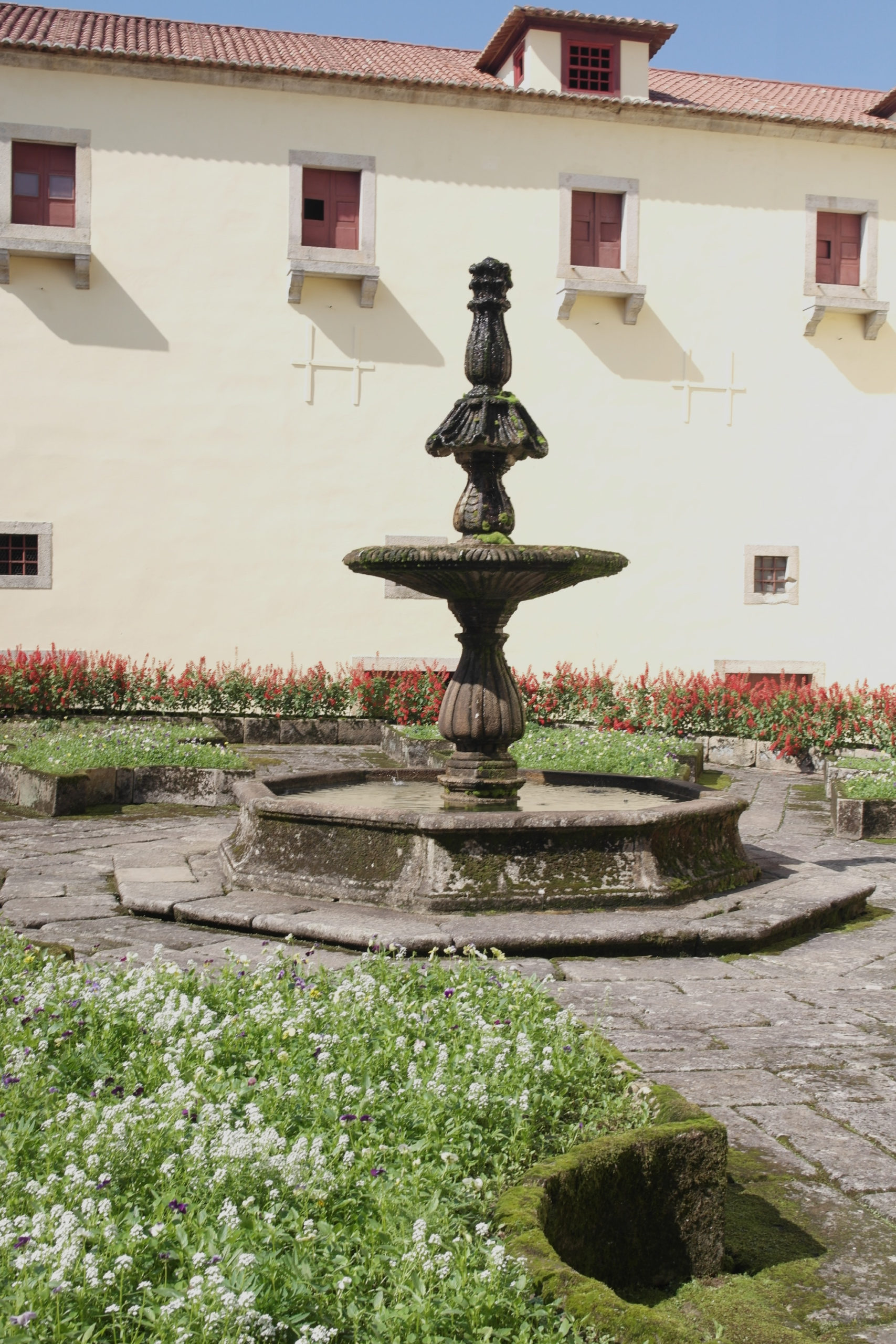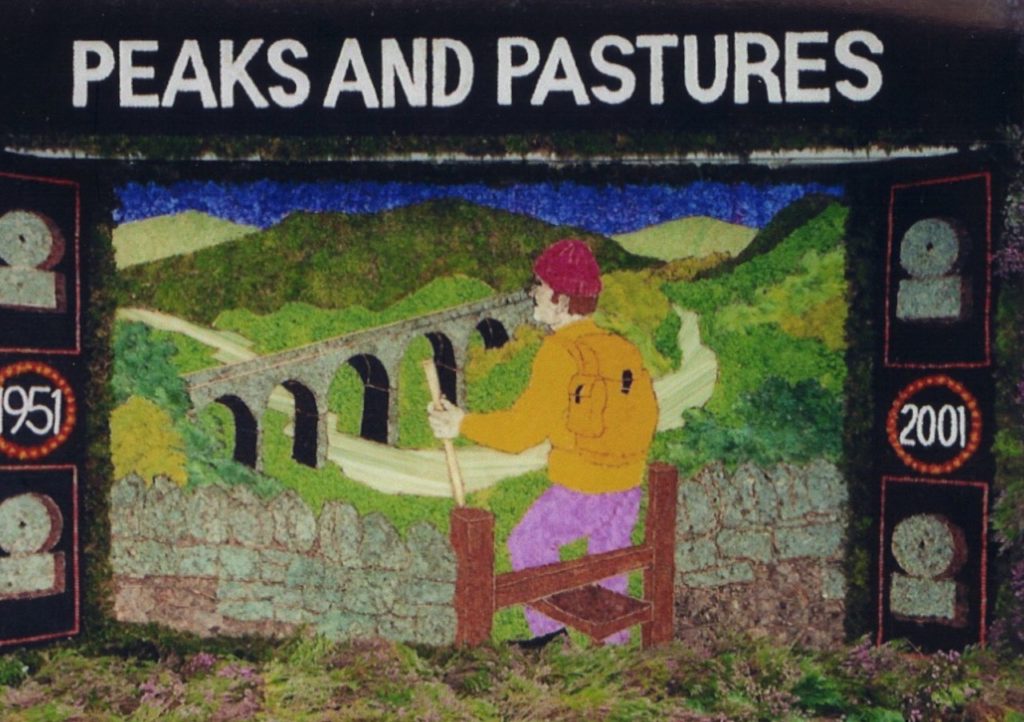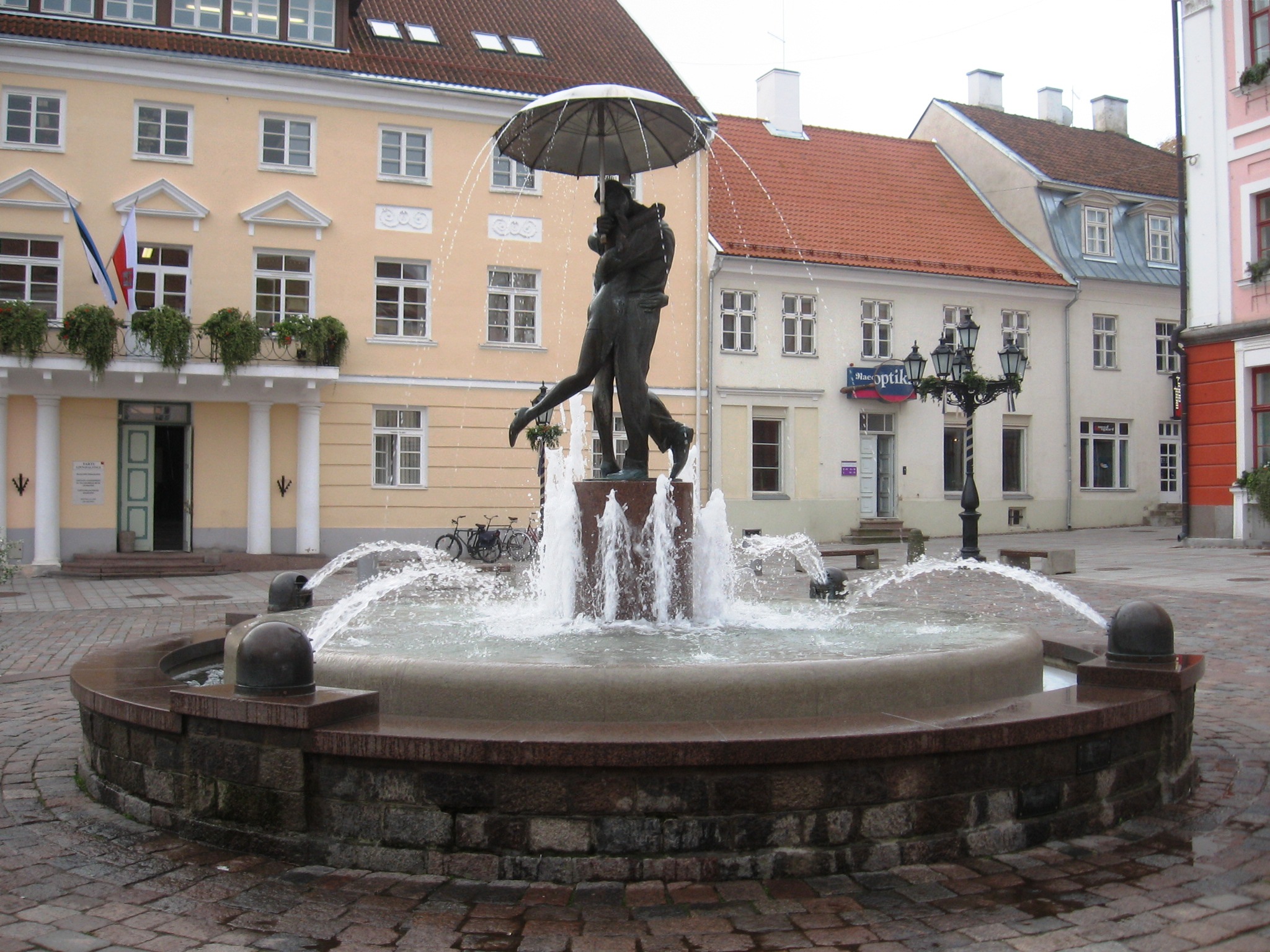The Kissing Students Fountain, Tartu, Estonia. Source: Geonarva: Creative Commons Attribution-Share Alike 3.0 Unported license
Moving water has a fascination for many. The way that the sunlight glistens and shimmers on the water has been captured many times, in different ways, in works of art throughout the centuries. Fountains add a different dimension to this watery landscape, especially when the sunlight is refracted in the mist, creating rainbows that dance in the air.

Fountains were created as bowls to capture the clean water from a spring for drinking, so these places often became linked to health and well-being. The health associated with fountains is even captured in our languages, for example, in English there is “the fountain of life” or “the fountain of youth” where drinking from the precious, clean water leads to a long and healthy life.
In many places fountains and springs were decorated as a thank you to God or the local gods of the area. The Derbyshire Well dressings [1] in the UK carry on this tradition. Villagers create elaborate pictures from petals laid on clay boards to decorate the wells, albeit these are mainly symbolic wells these days.
Fountain in a monastery, Portugal.
Photo courtesy of Joanna Storie

Each village has their own method for dressing the well, for example in the Barlow Village Well Dressing tradition [2], they use the whole flower to create the pictures on-site. The pictures are kept under canvas until they are revealed for the Blessing of the Well parade, where the ministers and priests from the Anglican, Catholic and Methodist churches walk together to bless the wells and thank God for the provision of water for yet another year. It is possible to sneak a look at the picture as it develops though, and the crew behind the canvas, will happily demonstrate their craft. Some of the villagers grow plants specifically for the well dressing, particularly hydrangeas for their blue colour. The essence of the tradition, however, is the same in each village and that is to demonstrate thankfulness for the provision of clean water.
(Photo courtesy of Joanna Storie)
Initially fountains were gravity fed constructions but modern pumps now provide the power to create fountains away from a natural water source. This also means that the water can be recycled in a continuous loop. Fountains can be used to create a peaceful and relaxing place with the gentle sound of bubbling water, or they can be used to create a playful area where children (and adults) can run through the water to cool off in the heat of summer, or a spectacular visual display with water jets, lights and music.
The BlueProfile case studies provide examples of several different fountains that contribute to a sense of well-being in multiple ways. For example, the Tanner Fountain, Harvard University Campus, USA is used to create a low maintenance fountain with an evocative atmosphere. The mist created amongst the stones by the ground-level jets of water and lighting at night add a poetic ambience that changes throughout the day, depending upon the lighting conditions. It also provides a place to relax in the midst of a busy thoroughfare within a bustling university campus.
The Promenade du Paillon, Nice, France uses fountains to create a cool walkway that is part of a green axis linking the city centre to the seafront. These cooling fountains are an important contribution to helping people, both locals and tourists, to cope with the heat of summer, in this southern French city. The promenade is created along an old riverbed that was covered over and the fountains now provide a playful reminder of a river lost to previous development.
The fountain area in City Park, Bradford, UK creates a large, mirrored pool. People can relax on the benches provided alongside, creating a calm space for contemplation in the middle of a busy city environment. By lowering the water level causeways are created which provides a large multi-functional space for events. The space can also act as a retention pond to capture stormwater in heavy rains, a valuable asset in the hard-surfaced, urban landscape. LED lights provide a playful night-time atmosphere, extending the recreational value of the place.
Fountains, therefore, do not just have a long history but also value in our present and future landscapes, as places for meditation and recreation. They can still play an important function in contributing to our health and well-being even today.
Other fountains (here). More will be added later
[1] The Derbyshire Well Dressing Traditions
[2] The Barlow Well Dressing Traditions

